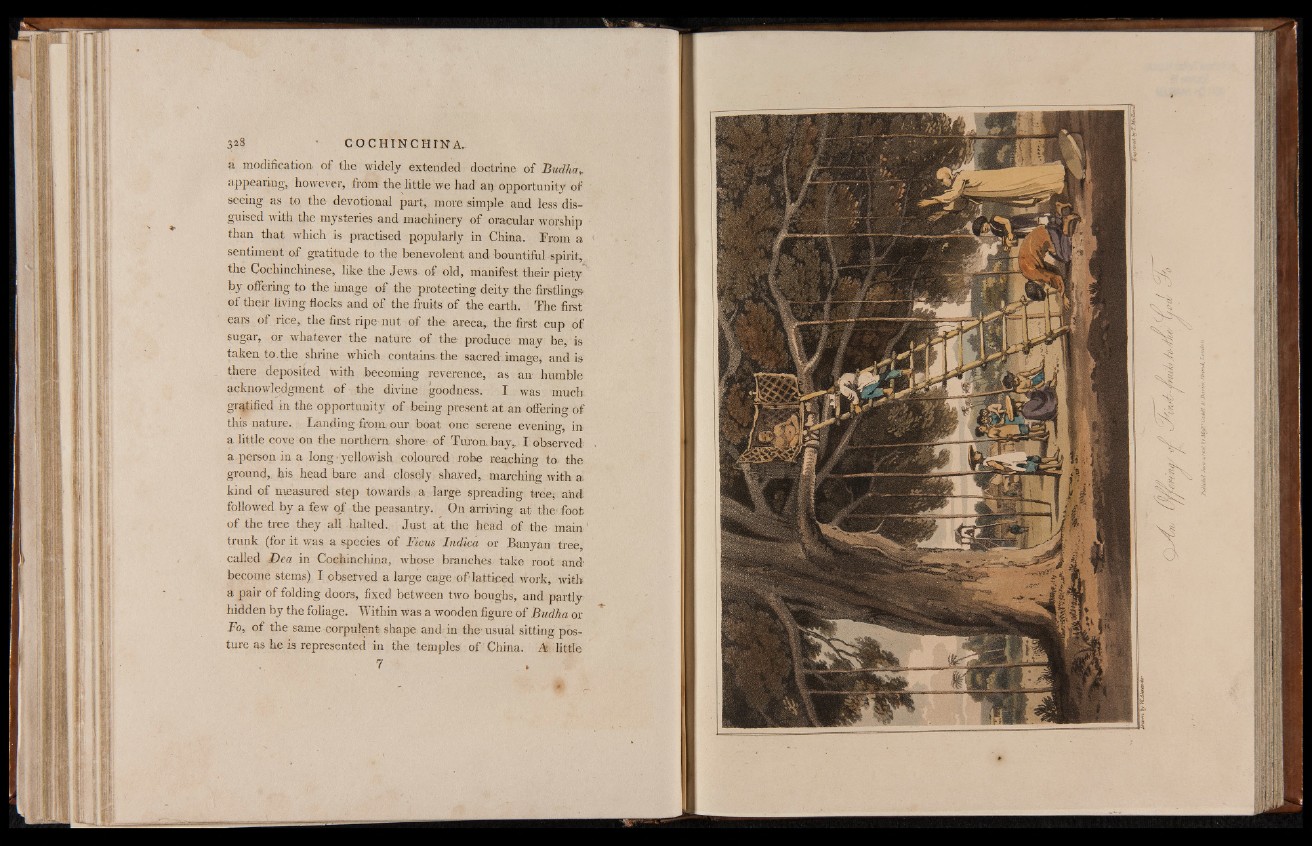
a modification, of the widely extended doctrine of Budha,,
appearing, however, from the little we had an opportunity of
seeing as to the devotional part, more simple and less disguised
'with the mysteries and machinery of oracular worship
than that which is practised popularly in China. From a
sentiment of gratitude to the benevolent and bountiful spirit,
the Cochinchinese, like the Jews of old, manifest their piety
by offering to the image of the protecting deity the firstlings
of their living flocks and of the fruits of the earth. The first
ears of rice, the first ripe nut of the areca, the first cup of
sugar, or whatever the nature of the produce may be, is
taken to.the shrine which contains-the sacred image, and is
there deposited with becoming reverence, as an- bumble
acknowledgment of the divine goodness. I was much
gratified in the opportunity of being present at an offering of
this nature. Landing from, our boat one serene evening, in
a little cove on the northern shore- of Turon. bay,, I observed
a person in a long > yellowish coloured robe reaching to the
ground, his head bare and closely shaved, marching with a
kind of measured step towards a large spreading tree; and
followed by a few of the peasantry. On arriving a t the- foot
of the tree they all halted.. Just at the head of the main1
trunk (for it was a species of Ficus Indica or Banyan tree
called Dea in Cochinchina, whose branches take root and-
become stems) I observed a large cage of-latticed work, with
a pair of folding doors, fixed between two boughs, and partly
hidden by the foliage. Within was a wooden figure of Budha or
Fo, of the same corpulent shape and. in the usual sitting posture
as he is represented in the temples of China. A little
7